84th Engineer Battalion (Construction)
Association Viet Nam

![]()

Operation Duke
If you were involved with Operation Duke at
LZ English Field please contact webmaster
Click here to see the 84Th. Unit Roster for the operation
The 19th & the 84th
worked together on quite a few projects in Vietnam.
COL. Nolan C. Rhodes
who was a soldier's - soldier
is honored to have his photo's and story of Operation Duke posted on the 84th website
Click here to download the PDF file of his story
Photos from Operation Duke follow the stories.
CPT. Joseph H. Lane (Memories)
In addition to the Engineers on Operation Duke, we had two medical personnel from a hospital that had deployed to Vietnam, but the hospital equipment had not yet arrived. Doctor (Captain) Al Glock and 1st Lieutenant (Army Nurse Corps) Ken McDaniels volunteered and accompanied us for the duration. Doc Glock and Lt McDaniels established a regular sick call for us and for the local Vietnamese. During the time we were there an Army pilot injured himself seriously while attempting to start his aircraft. Doc Glock attended to him until his medevac. Also, we found a young Vietnamese girl who lived in the local area who had been injured by shrapnel at an early age. Her cheek healed with a hole in it so that the teeth grew in the direction of the hole and she had difficulty swallowing because of her inability to create a vacuum. Doc Glock arranged for her and her mother to be medevaced to Qui Nhon where eventually skin grafts would solve her problem.

God Bless America
Letters of Commendation were given to all of the members of Operation Duke
.jpg)
A short story about
OPERATION DUKE
by
© Dean Contover
It was 3:00 a.m. in Qui Nhon , Vietnam when we were awakened by the staff sergeant to go to the mess hall for breakfast and to be briefed. One hundred and eighty seven engineers were hand picked for this operations which was to take place near the town of Bong Son on the coast of South Viet Nam . Our mission was to build an airfield there. Rumor had it that Operation Duke was top priority and the word had come from headquarters in Saigon .
I was one of about forty-five engineers that had come to Qui- Nhon from An Khe, which was forty-seven miles to the west. Qui Nhon is the third largest city in South Viet Nan. Since it is on the coast, it is considered a very important seaport.
After our briefing, we moved to the port in five convoys. The week before we had prepared our equipment; we were ready to move out at anytime. I drove a five-ton dump truck that had two rubber fuel bladders containing six hundred gallons of gasoline apiece. There were six other dump trucks that carried fuel enough for our vehicles to run on the field. Other equipment included: six earth‑scrapers, two bulldozers, four graders, and many assorted vehicles. All this had to be loaded on a ship; a convoy over land was impossible since the Viet Cong had blown up most of the bridges to Bong son.
My convoy was the first to arrive on .the beach at about 6:30 a.m. on September 1, 1966 . We waited until 11:00 a.m. before we could load up on the landing craft. This would take us to the U.S.S Gunston Hull (LSD-5), a landing ship dock. Once, on board, our equipment was put on the upper deck by cables which were exceptionally manipulated by the sailors. It took all day for our gear to be placed on board. i We lashed down our vehicles so they would riot hit anything when the ship pitched and rolled at sea. After a couple hours of this tiring work, we went to the ship's mess and had a wonderful meal. It was the first time in six months that I had eaten red tomatoes! I filled a soup bowl with as much as I could and ate one red, juicy piece at time. What a delicious treat. The sailors on board were fairly friendly towards us; I could tell they did not wish to be in our shoes.' We departed Qui Nhon that evening and hit the rack early because we were so tired. It had been a long day and there would be longer .days. ahead. My room had air conditioning and for the first time, I thought to my self, I was in a room with four walls, a ceiling and a floor. It was Heaven like and very cool
The next morning, we were off the coast of Tam Quan , about nine miles north of Bong Son. We were on board the Gunston #all for two nights before we landed. I'll never forget it, the surf was bad and on the beach, our unit was receiving harassing from the Viet Cong. I can clearly remember watching the jets bomb areas to our right. looking our to sea, I could see one destroyer on the horizon, peppering the beach with its guns. I was on the last landing craft that final morning and to be honest with you, I didn't want tot leave. We waited on the beach until noon to move inland. Four days before we landed, three bridge companies and one combat engineer company (to provide security for the bridge companies) had landed. They were there to build bridges for our heavy equipment. The completion of the bridges caused the delay.
We finally moved to a South Vietnamese army compound for the night. This position was four miles. from the beach. An attack was expected that night but it never happened. For some reason, our officers would not give us hand grenades that night. Instead, about twenty of us borrowed hand grenades from the U.S. Army for the day. We all cleaned our M-14's and dug in deep. The next morning, most of us woke up to a fire fight about a quarter of a mile from our position. The Army of the Republic of Vietnam (ARVN) had come in contact with a squad of Viet Cong. Early that morning, the mine sweeping team moved out to clear the road while we all waited. This gave time to nearly a dozen G.I.'s to talk to the ARVN second lieutenant. He was the executive officer of the armed personnel carrier that had escorted us from the beach. They were also our rear security. The second lieutenant knew how to speak English fairly well. He showed us on the map just where the Viet Cong and the North Vietnamese Army strongholds were in the area. P.F.C. Nelson asked him why and for how long he had been fighting the Viet Cong. He told us that he had been fighting them for fifteen years. He said, "I was a young boy when the Viet Minh had come to my village. They told my father to go with them. He refused and they left, only to return later. and take my father away." His father never came back and was never heard from again.
The lieutenant asked P.F.C. Nelson what we were going to build. He said that we were going to construct an air strip in two weeks. P.F.C.. Devlin said we'd be working around. the clock to finish it using lights in the dark. The lieutenant looked at us as if we were crazy because it was unheard of to use lights in this area at night. After a little noon chow, word came to motivate. Two miles down the road, we started to get hit by sniper fire on the right. I told my shot-gun, P.F.C. Devlin, to let them know we were here. He started to fire at the tree line on the other side of the rice patties. We came to our destination and no one was wounded or killed. Luck was with us.
We took a position on a knob of a ridge, dug fox holes, pitched our
tents, and put barbed-wire around the perimeter. Operation Duke
took two months though it was expected to be completed in two weeks.
C rations kept us going for all that time and four hot meals that were
brought by helicopter near the end of our mission were real reinforcement
for our hard work. We appreciated our work even more when we saw the
first large transport plane (a Lockheed C-130 Hercules) land at English
Airfield.
© Dean Contover
From Alona
Pryor
Co B 84th EBC 1966 - 1967
I served with Co.B 84th ebc
at Ane Khe Vietnam 1966 to 1967
no mention of our base in Ane-Khe
was found on your web site..
In late 1966 a contingent of Co.B was
sent to Bong Son (DE DUk)
to build an airstrip there for the 1st Cav.Div.
at L.Z. English.
I took part in that operation.
Our base camp at Ane
Khe was originally a tent compond
but later the tents were replaced
with wooden buildings and concrete floors.
ourshield or crest was a
red with a white stripe down the center and a lizard over it
( pictured
on page 6--0in the section--The Men From HHC )
Our motto was
"we
do the impossible right away-miricals take a little longer"
I lost
my crest pins years ago and have been looking for replacements all
these years with no success.
Maybe i'll find them someday.
Operation Duke was in support
of the 1st Cavalry Division ( Air Mobile) at
LZ. English Field in late 1966. (Near Bong Son)
The 84th EBC. was charged
with building the 1,400 Ft. extension to the
run way to permit sustained use by C-130 aircraft.
Men and equipment for the operation were provided by
"HQ"., "A" Co., "B" Co., "C" Co., and "D"Co.,
of the 84th EBC.
Units with Operation Duke
(Thanks to Dean Contover of B Co 84th)
84th Engr.Bn (Const)
19th Engr. Bn. (CBT)
509th Engr. Co. (FB)
553rd Engr. Co. (FB)
554th Engr. Co. (FB)
513th Engr. Co. (DT)
585th Engr. Co. (DT)
630th Engr. Co. (LE)
The 19th. Engineer Battalion was assigned to land two companies on the
beach,construct a bridge across the tidal inlet, repair the causeway and
clear the road from the beach to Tam Quan and then south to De Duc for the
passage of the 84th and its heavy equipment.
Information provided by Bob Uccello of the 73rd Eng.(CS)
is that LZ. English Field was Black Toped by the 73rd
in October and November of 1967.
The first set of pictures were provided by
19th Engineer (Combat) Battalion Association
and
Former 19th Commander
Col. Nolan C. Rhodes
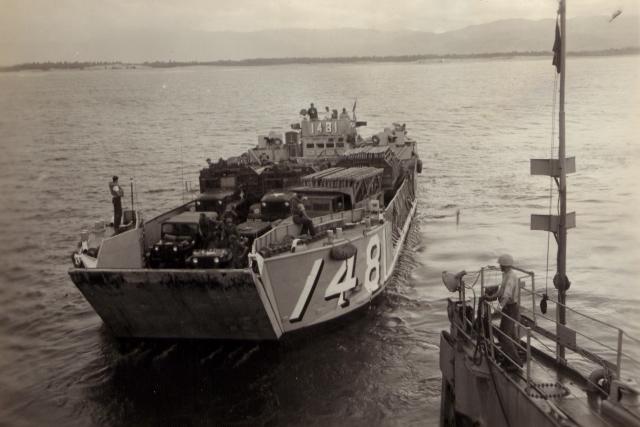
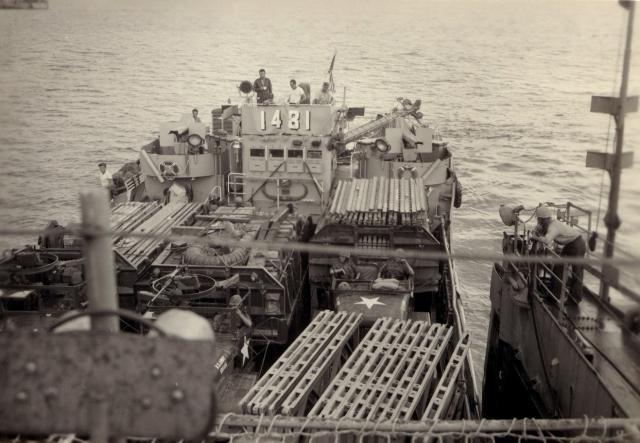
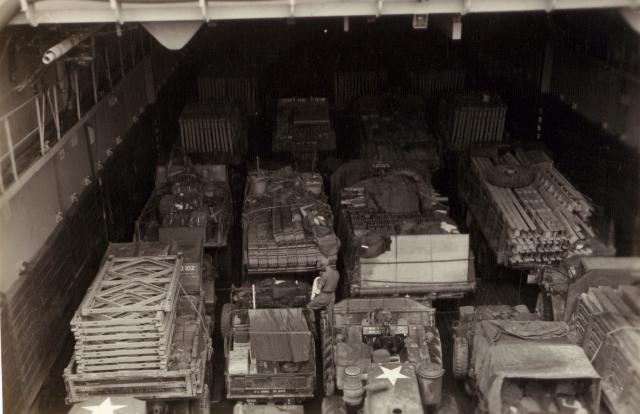
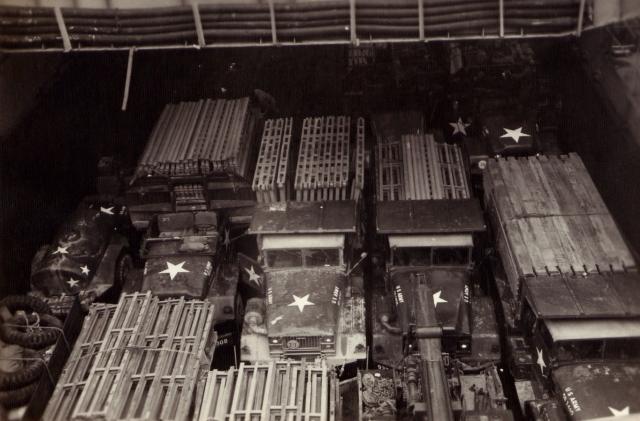
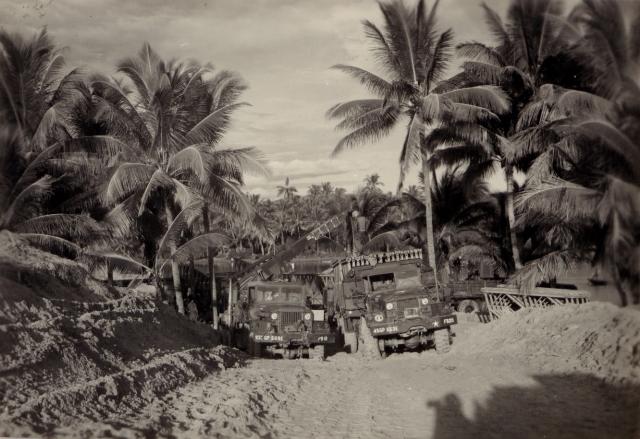
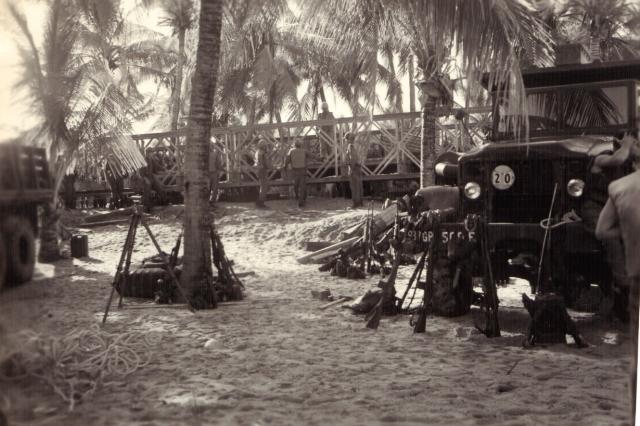



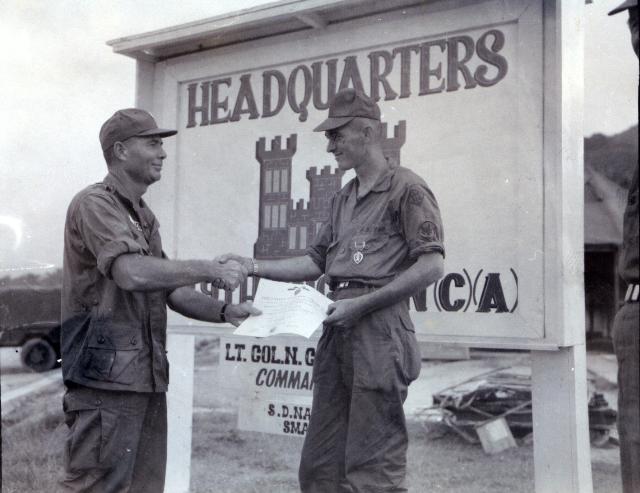
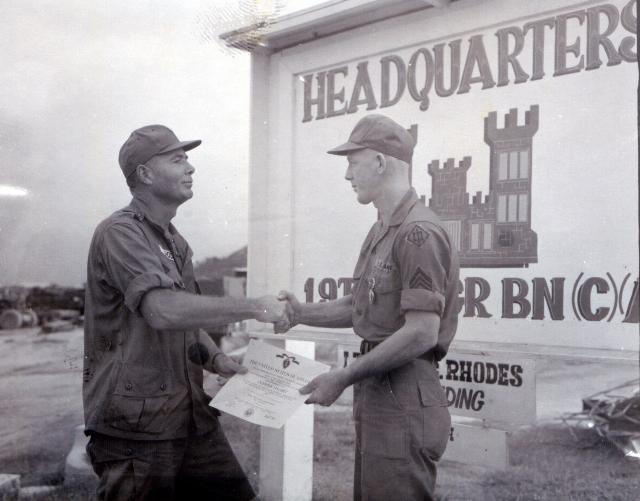
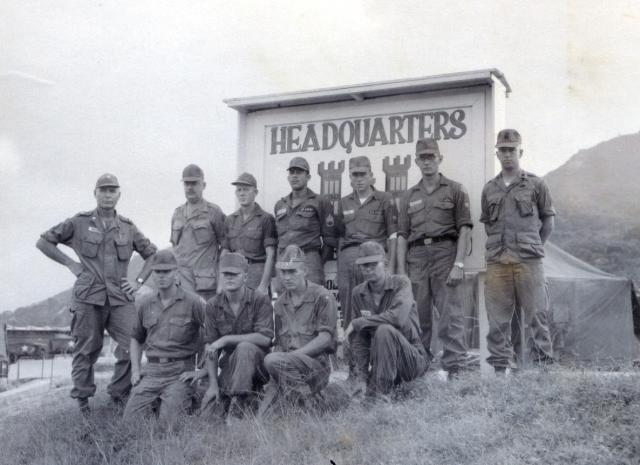
of "D" Co., 84th. Engineers.
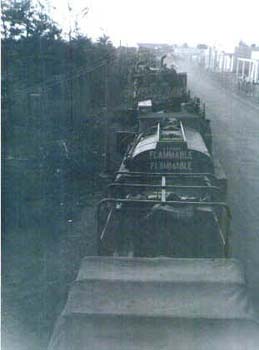
Early morning Qui Nhon awaiting orders to load up the ship, "B" Co. man standing by.
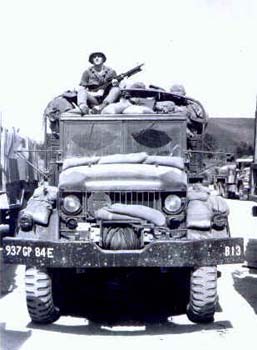
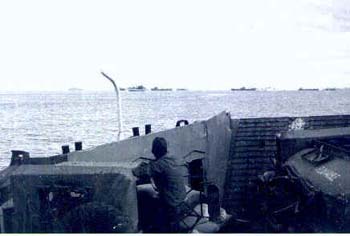
View of Qui Nhon Harbor
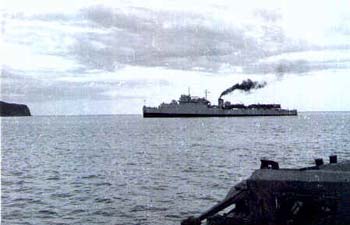
USS. Gunston Hall 5 LSD (Landing Ship Dock)
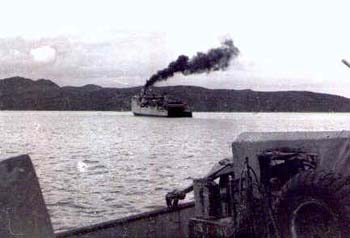
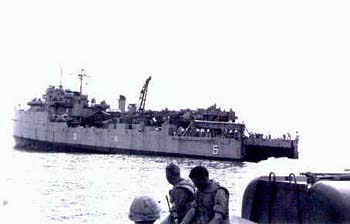
Ward and Ogden from the 513th Eng.
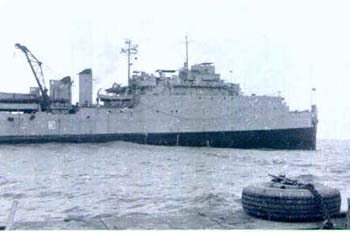
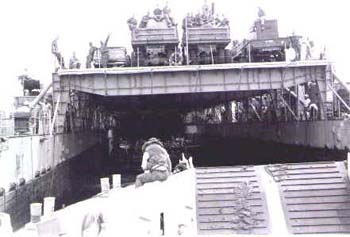
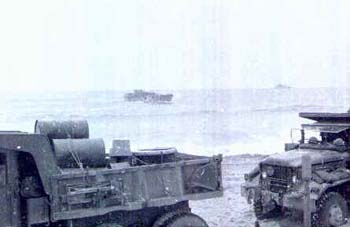
The landing of the 84th Engineers on the beach
at Bong Son.

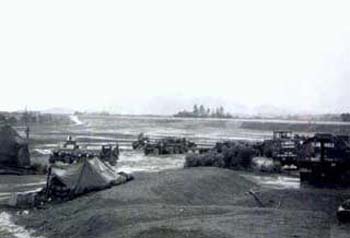
Our living conditions at the field
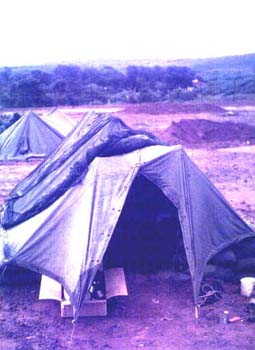
Sharp's Quarters
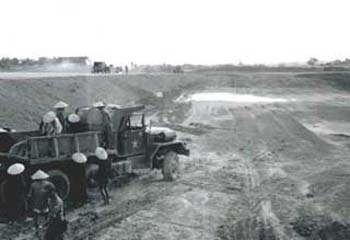
Locals helping with labor at the camp
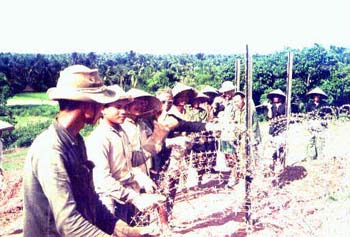

Land mines were a problem and not funny at all !!
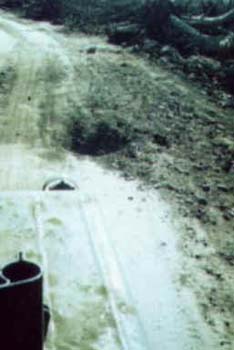
830M hit a land mine on the way to English Field (operatorCoates)
Photo provided by Paul Chisolm of
B Co.
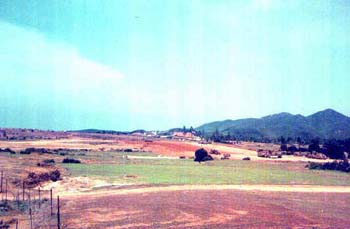
The runway from a distance
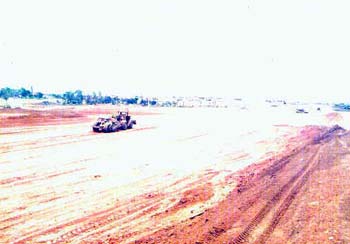
830M on the runway
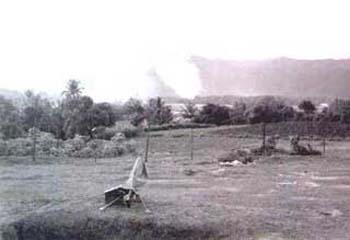
Covered M 60 Machine Gun Fires burn in the distance
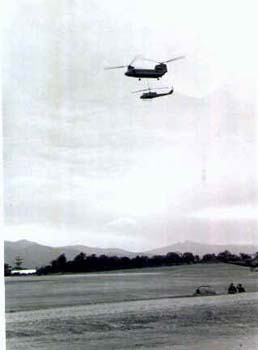
With a little help from your friends
The following photos were provided by Russ Weber of "A" Co., 84th. Engineers.
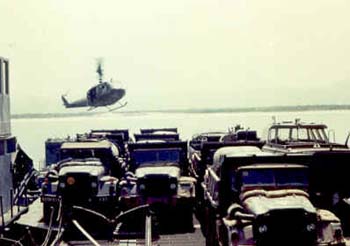
General Pluge landing for inspection
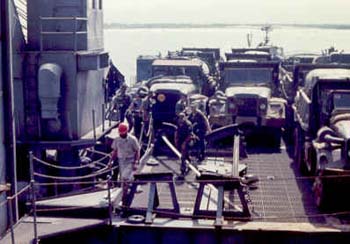
General Pluge boarding ship
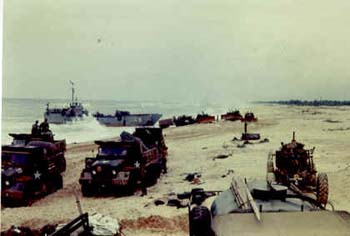
The Landing
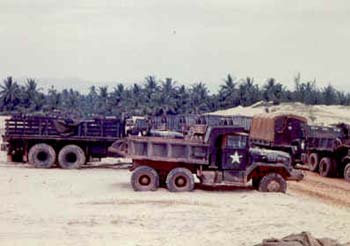

Moving out from the beach landing area inland to LZ English Field